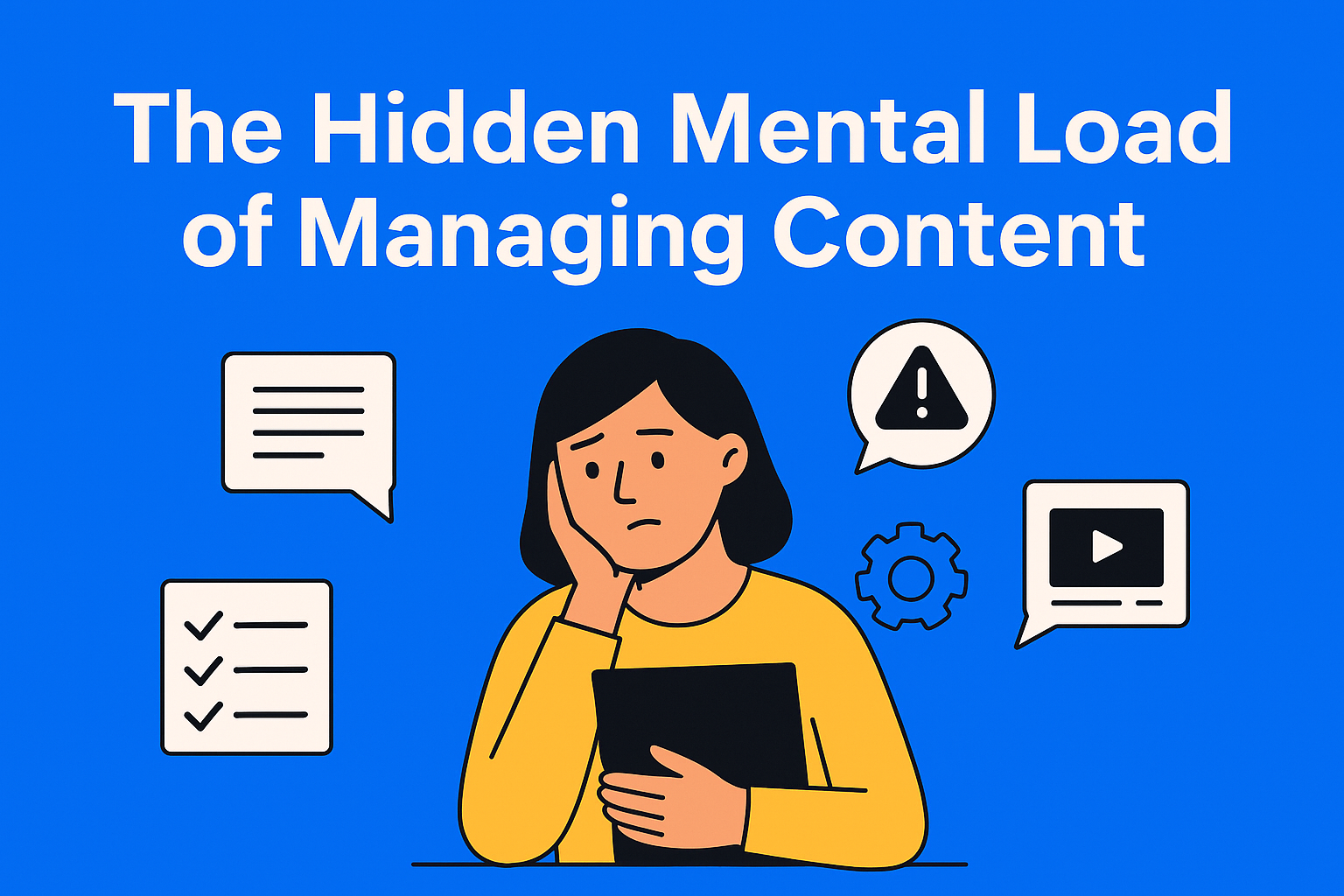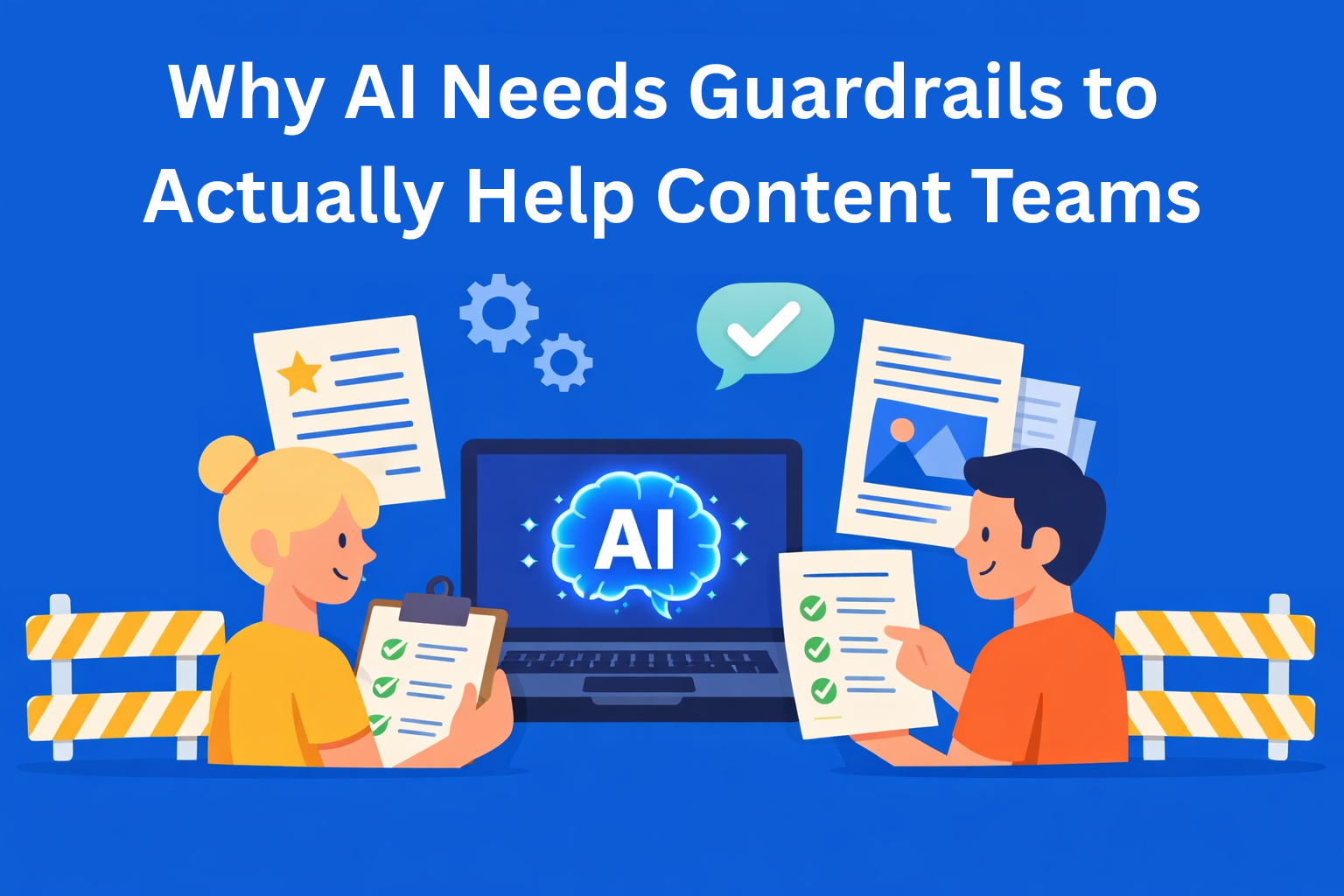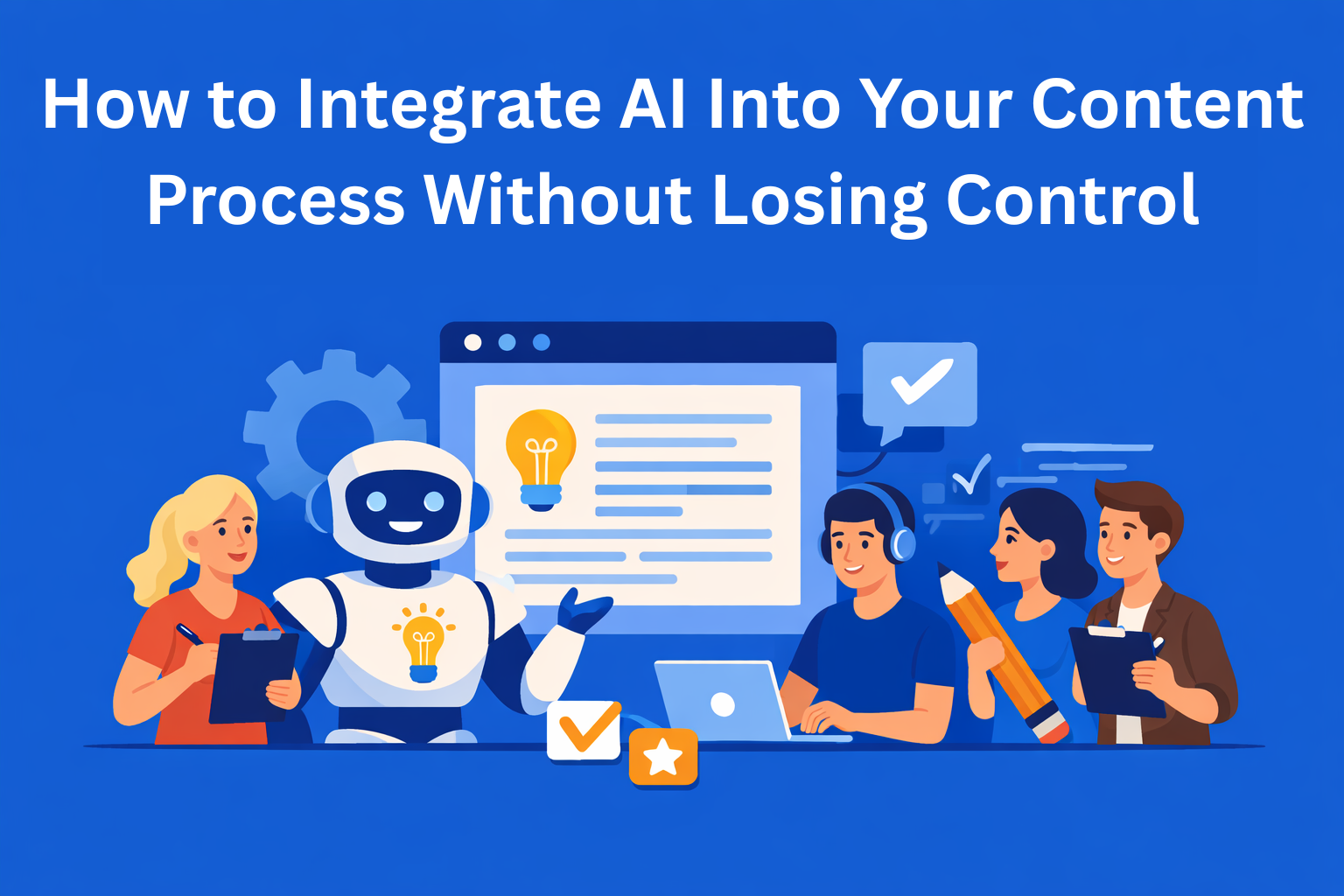The Hidden Mental Load of Managing Content
Behind every published post is a content manager quietly juggling deadlines, approvals, and a mountain of mental tabs. This blog explores the unseen strain of content management - and how better systems can bring back sanity.

Content managers are the unsung heroes of the marketing world. They may not wear capes, but they do wield spreadsheets, Slack threads, and a borderline-heroic amount of patience.
They’re the ones keeping deadlines in check, smoothing over creative differences, and making sure that, yes, that blog post from three months ago finally gets its SEO update.
But beneath the daily chaos lies something most people don’t see - the mental load of managing content.
It’s the constant juggling of priorities, people, and platforms. The hundreds of small decisions and follow-ups that keep the content engine running. And unlike burnout (which everyone notices once it’s too late), this kind of strain creeps in quietly.
Let’s unpack what this hidden mental load looks like - and more importantly, how to lighten it.
Key Takeaways
- Content managers carry an invisible load - Beyond tasks and deadlines, they constantly juggle people, priorities, and platforms, which quietly strains focus and energy.
- Mental clutter kills creativity - When every small decision and follow-up depends on one person, there’s little room left for strategic or creative thinking.
- Systems beat memory - Centralizing workflows, briefs, and approvals in one place removes the need to mentally track everything.
- Clear ownership prevents chaos - Defining roles and automating reminders stops bottlenecks and constant chasing.
- Lightening the load helps teams thrive - When content managers have mental space, creativity, collaboration, and overall team performance improves.
The Many Tabs Open in a Content Manager’s Brain
If you’ve ever caught yourself thinking “I need to remind Sarah about that draft… but also chase feedback from James… and did we ever approve the headline for next week’s newsletter?” - congratulations, you’re experiencing the content manager’s version of mental multitasking gymnastics.
Here’s what’s usually running in the background:
- Tracking multiple timelines across blogs, social media, and campaigns.
- Chasing approvals that mysteriously vanish into the void.
- Keeping tone and voice consistent, even when three different freelancers are writing simultaneously.
- Managing assets, from visuals to metadata, across multiple folders.
- Fielding endless pings, because everyone assumes you know everything - which, to be fair, you kind of do.
It’s not just “busywork.” It’s mental load - the invisible work of constantly keeping track so nothing slips through the cracks.
The Cost of Carrying It All
The problem with mental load is that it doesn’t show up on a timesheet. There’s no “spent three hours keeping track of everyone else’s tasks” box to check off.
But it still takes a toll.
1. Decision fatigue
When every small choice (from blog titles to feedback order) falls on one person, decisions start to feel heavier. You might notice more “let’s just go with this for now” moments, which is content-manager-speak for I can’t think anymore.
2. Reduced creativity
You can’t brainstorm fresh ideas when your brain’s running constant logistics. The more you manage chaos, the less room you have for creative thinking.
3. Burnout disguised as “just being busy”
Because the work never fully stops, you get used to the feeling of juggling too much. But “always on” eventually becomes exhaustion. And since the mental load is invisible, it rarely gets acknowledged - until someone crashes.
Why Systems Beat Memory (Every Time)
Most content managers rely on memory far more than they realize. But here’s the thing: even the sharpest memory is no match for a chaotic content process.
That’s why the secret to lightening the mental load isn’t working harder - it’s working smarter.
1. Centralize everything
When your content lives in multiple tools, you become the human bridge connecting them. Move approvals here, briefs there, and oh - don’t forget to check that random Google Doc someone created last week.
Platforms like EasyContent exist to fix that. By keeping briefs, workflows, approvals, and documentation in one place, you remove the need to mentally track where everything is. Your brain can finally take a break.
2. Define ownership clearly
Half of a content manager’s stress comes from chasing people who didn’t realize something was their job. Clear ownership means fewer “Hey, just checking on this” messages and fewer moments of you wondering who dropped the ball.
Assign roles early. Make them visible. And if possible, automate reminders so you’re not the one doing the chasing (again, EasyContent’s got you covered there).
3. Automate repetitive tasks
Every manual approval email, every nudge, every “status update” message is a tiny cognitive toll. It doesn’t seem like much, but multiplied by dozens of projects, it’s mental clutter on steroids.
Automate wherever you can - reminders, handoffs, or even standard task creation. Let the system do the remembering, so your brain doesn’t have to.
4. Document your process
Documentation might sound boring, but it’s mental peace in disguise. When your workflows and style guides are written down, you’re not fielding the same questions every week.
Instead of repeating “Our tone is conversational but not casual” for the 47th time, just point people to the doc. Or better yet, store those guidelines inside your workflow tool so they’re impossible to miss.
Turning Chaos Into Clarity
When you start putting structure around your process, something amazing happens: clarity replaces chaos.
You stop being the central bottleneck for every decision. Writers and editors know exactly where to find things. Projects move forward without constant babysitting.
And suddenly, managing content feels less like spinning plates and more like running an orchestra - everything coordinated, flowing, predictable (in a good way).
Sure, you’ll still have busy days. But they’ll be busy with purpose - not with mental ping-pong between 12 open tabs and three missed deadlines.
Why This Isn’t Just About Efficiency
Lightening the mental load isn’t just good for productivity - it’s good for people.
When content managers have mental space, they become better leaders. They can give thoughtful feedback instead of rushed ones. They can focus on strategy instead of firefighting. They can actually enjoy their work again. (We know we made it sound more dramatic than it actually is!)
And that has a ripple effect across the team:
- Writers feel less micromanaged.
- Editors feel more supported.
- Leadership gets more consistent output (and fewer panic updates).
Conclusion
The mental load of managing content is real - and it’s often the reason good content teams start burning out.
But you don’t need more hours or caffeine to fix it. You need systems that think for you, structure that keeps everyone aligned, and workflows that don’t rely on superhuman memory.
Platforms like EasyContent can help you centralize, automate, and document everything, so you can finally focus on what actually matters - creating great content, not just managing it.
Because the less your brain has to juggle, the better your team (and your sanity) will perform.






